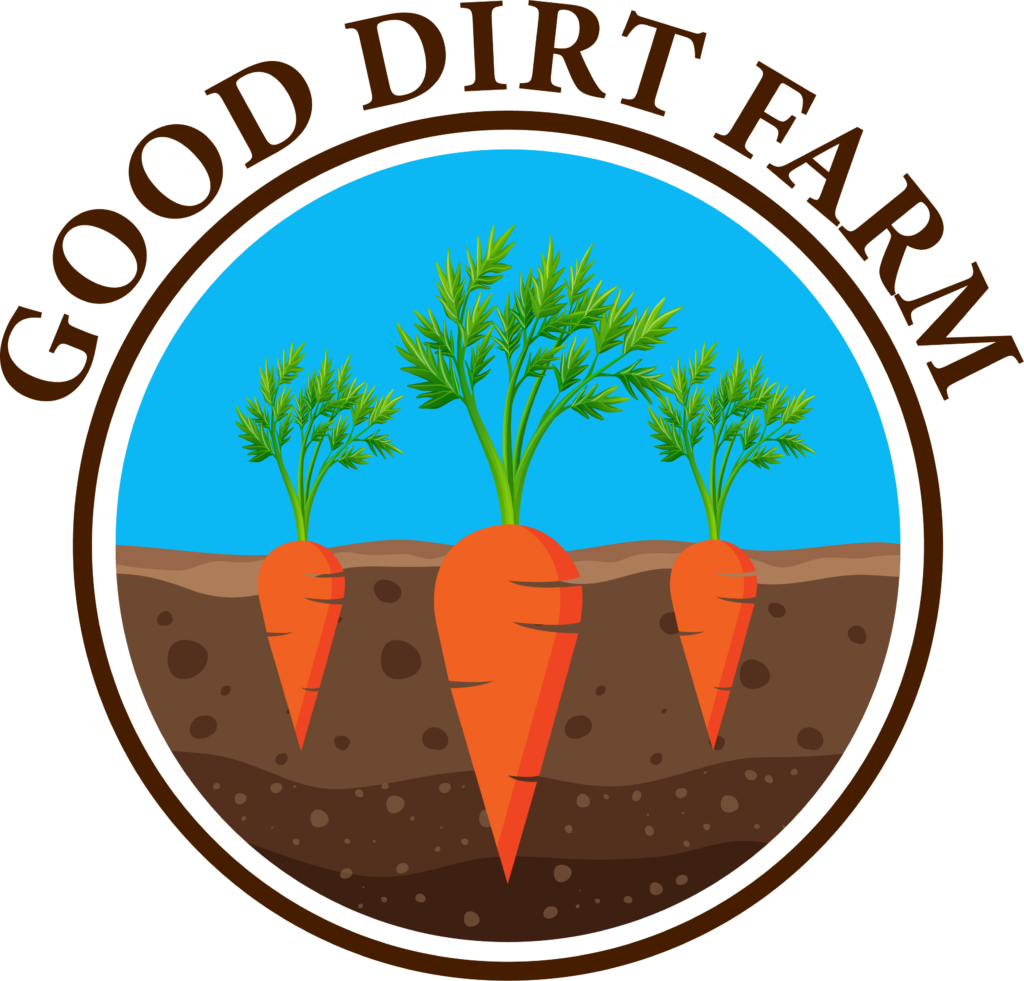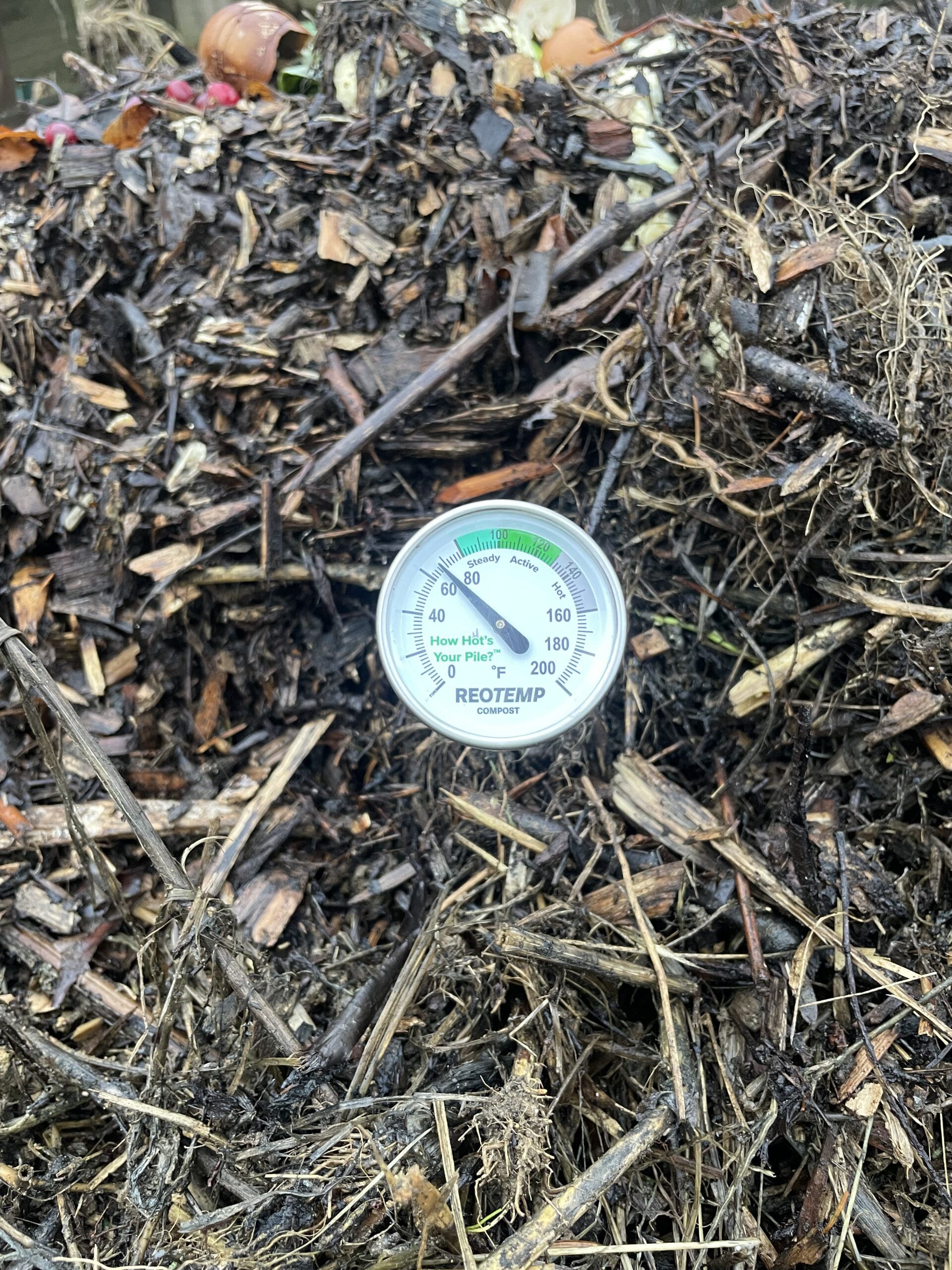People often ask us “what makes the dirt so good?”, and while the answer is admittedly complex, one of the first things we always say is “well, we use a lot of compost, for one”. Its true, compost is a foundational aspect of our soil management strategy. Before planting almost anything in our garden, we add a layer of compost directly on top of our growing beds before transplanting or sowing seeds. We actually use more compost than we could possibly produce here at the farm, but that doesn’t mean we don’t have our own system for producing black gold.
What is Compost Anyway?
Simply put, compost is broken down organic matter. Basically anything that isn’t plastic, ceramic, or metal can be turned into compost. The beauty and magic of compost is that its almost entirely a life-based process. Wood chips, table scraps, grass clippings, leaves, and other kinds of organic material are basically worked up the food chain from bacteria through fungi, protozoa, nematodes, and up to worms and bugs until all of that “food” has been consumed.
The byproduct is a carbon and nutrient rich material called “humus” that basically improves everything about soil. It helps plant roots access nutrients, holds water and promotes healthy soil microbiology, and more. In order to make compost, we simply have to provide the right conditions and the right food for all of the above bacteria, fungi, and bugs to flourish.

Basic Requirements for a Compost Pile
For the purposes of this section, we’re going to discuss specifically an aerobic, hot composting method. There are many ways to make compost, and they all have different needs and requirements. These are the requirements we try to meet when we make our own compost here at the farm.
The first two important things are water and air. Bacteria and Fungi need both water and air to eat, live, and multiply, so there must be access to both in the pile. A rule of thumb for moisture is that the compost pile should always be wet enough that a handful will drip a bit when squeezed, but not sopping wet and certainly not dry. For us, this means sometimes watering our pile just like we would water a plant when the weather is hot and dry.
A light, fluffy pile will help the microbiology access air. Mixing in some larger, more irregularly shaped things like sticks and wood chips can give the pile some structure and let air in. Turning the pile, meaning unbuilding the pile and rebuilding it, also adds air to the system.
If you’ve created good air and water in your compost pile, the only other thing you have to balance is the food: what exactly goes into your pile? Everything in a static, hot compost pile is a balance between two elements: Carbon and Nitrogen. Nitrogen is what helps create a bonanza of bacterial growth within the first few days of making a pile, and also contributes to heating the pile up during that phase. Carbon, meanwhile, promotes fungal growth and balances the biodiversity in the pile.
Carbon, or “brown”, materials include leaves, wood chips, sawdust, straw, and hay. These materials have very little nitrogen. The “green” Nitrogen materials are meat/fish, food scraps, fresh grass clippings, coffee grounds, and others. We could write a whole book (and many have) on the subject of balancing these materials, but here’s a good rule of thumb: when making a pile, layer a couple of inches of carbon material, then a couple of inches of nitrogen, and so on. This will give you a good starting point, and you can adjust what you use as you go.
How We Make Compost
Our system at the farm is really simple. We built three compost “bays” out of old picket fence that allows air to enter on three sides. The front of each bay is open. We work from left to right, such that the left most pile is the one we are currently building and adding to. When we have food scraps from our kitchen, old plant material from the garden, or freshly cut grass, we’ll add it to the pile along with a shovelful or two of wood chips.
Once every month or two, we “turn” our compost. We start by taking the pile on the right and sifting out the larger bits and pieces that haven’t decomposed. What is left is the final product – compost that we can use in our garden. Then, we fill the right most bay that is now empty with the compost pile in the center, turning that pile as we go. We do the same by moving the left pile into the center bay.
Then, we build a new pile in the left bay. Our favorite way to start a new pile is to build it on a day where we have lots of “green” materials – either freshly mown grass or a lot of chopped up old crop material. Then, we layer that material alternating with wood chips until the pile is about 4 feet high.
Then, we sit back and let nature get to work. If we’ve balanced air, water, and food well, the center of the pile will get hot (sometimes over 150 degrees farenhiet) within 3-5 days. It will stay that way for a few days, and then gradually cool down over the next few weeks as thermophilic bacteria transition into fungi. Each time we turn the pile, we see similar temperature spikes and cooldowns, though less dramatic than a new pile.
By the time we have finished compost, the piles have cooled off and most decomposition has ended. For us, this is anywhere from 2-4 months, usually longer in the winter. Finding the right balance for a hot compost pile has a lot of benefits. It decreases the time it takes to produce the compost, kills off weed seeds and pathogens in the pile, and efficiently stores nutrients for our garden.

How You Can Make Your Own Compost
Making your compost is as simple as balancing air, water, carbon, and nitrogen! An important note is that in order for a pile to start getting hot, it has to be a certain size. Usually anything larger than 4 feet tall and 4 feet in diameter at the base is good. A pile built this way wont give off any odor besides a sweet, earthy smell, and you’ll see instant benefits when you use it in your garden.
Another piece of advice: if all else fails, time is your friend! All piles of organic matter will eventually turn to compost, just maybe measured in years rather than months. There is nothing wrong with simply letting a compost pile continue to sit. The longer it sits, the more broken down the material will become.
Our best advice to anyone thinking about making compost is: go for it! Composting improves our soils, saves organic matter from landfills, and genuinely recycles nutrients in our food system! There are few more truly sustainable and regenerative processes than composting.

